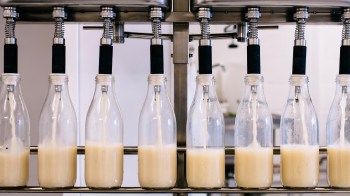Poop power: A new generation of companies bet on a different renewable energy (Infographic)
Share Now on:
Poop power: A new generation of companies bet on a different renewable energy (Infographic)
There are about nine million dairy cows in the United States, and every day each of those cows squirts out about 6.5 gallons of milk and poops about 24 gallons of manure. We drink the milk; the manure decomposes. And when it does, some very bad things happen. Nitrous oxide and methane float up to the heavens like the souls of road kill.
According to the Intergovernmental Panel on Climate Change, “nitrous oxide warms the atmosphere 310 times more than carbon dioxide, methane does so 21 times more.”
Dairy cows actually produce about 280 litres of methane per day most of it through burps.
Of course, it doesn’t have to be this way. In many places, all that dung is used to generate electricity. Machines called digesters use anaerobic digestion to extract the gas from manure and burn it to power generators. They basically work like a giant cow stomach.
Dairy farmers use the electricity to power their farms, the solid waste is used for cow bedding, and the liquid waste can be used as fertilizer. All that helps the farmer’s bottom line and reduces greenhouse gas emissions.
It’s not new technology, but like anything involving environmental hazards and government agencies, there are economic and bureaucratic obstacles to overcome. Especially in the state that produces the most milk in the U.S. Now you are probably thinking of Wisconsin (1.27 million dairy cows) but you, my dear cheese-loving friend, are mistaken. California is number one when it comes to milk with 1.8 million dairy cows in the state.
But as a result of regulatory hurdles, pollution issues and inadequate financial incentives, most dairy farmers in California abandoned their digesters years ago. Now a number of companies hope to reverse that trend with a new generation of digesters. The state is also doing its part. It has introduced a new permit process that aims to reduce the red tape that plagued past renewable energy projects.
If digesters were put in use in all of the California’s dairy farms, the state’s 1.8 million dairy cows could generate up to 1,971 gigawatt hours of electricity each year—enough to cover about .7% of California’s electricity. By comparison 11.6% of California’s electricity was generated by all renewable energy which includes solar, geothermal, small hydroelectric and biomass.
There’s a lot happening in the world. Through it all, Marketplace is here for you.
You rely on Marketplace to break down the world’s events and tell you how it affects you in a fact-based, approachable way. We rely on your financial support to keep making that possible.
Your donation today powers the independent journalism that you rely on. For just $5/month, you can help sustain Marketplace so we can keep reporting on the things that matter to you.


















